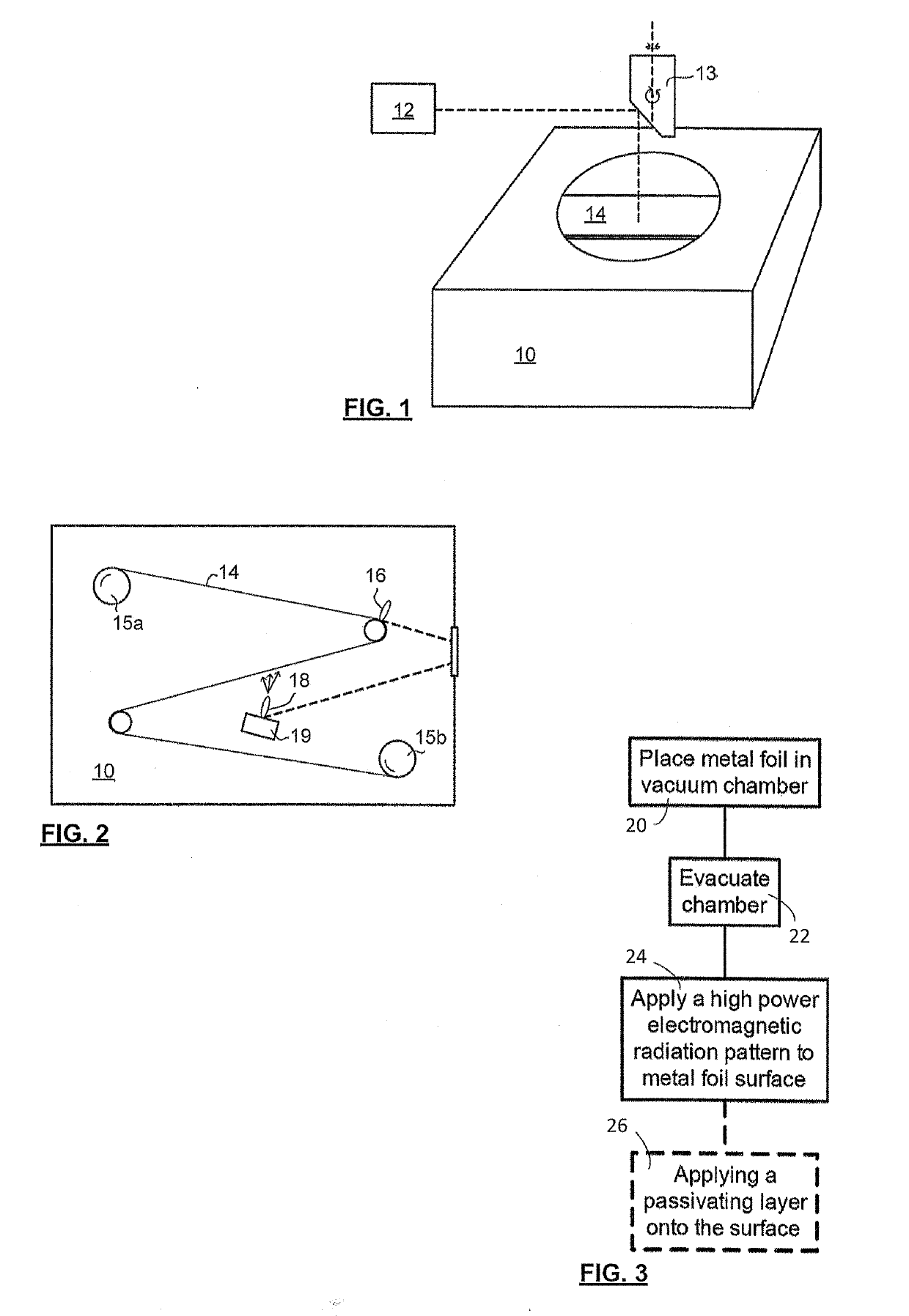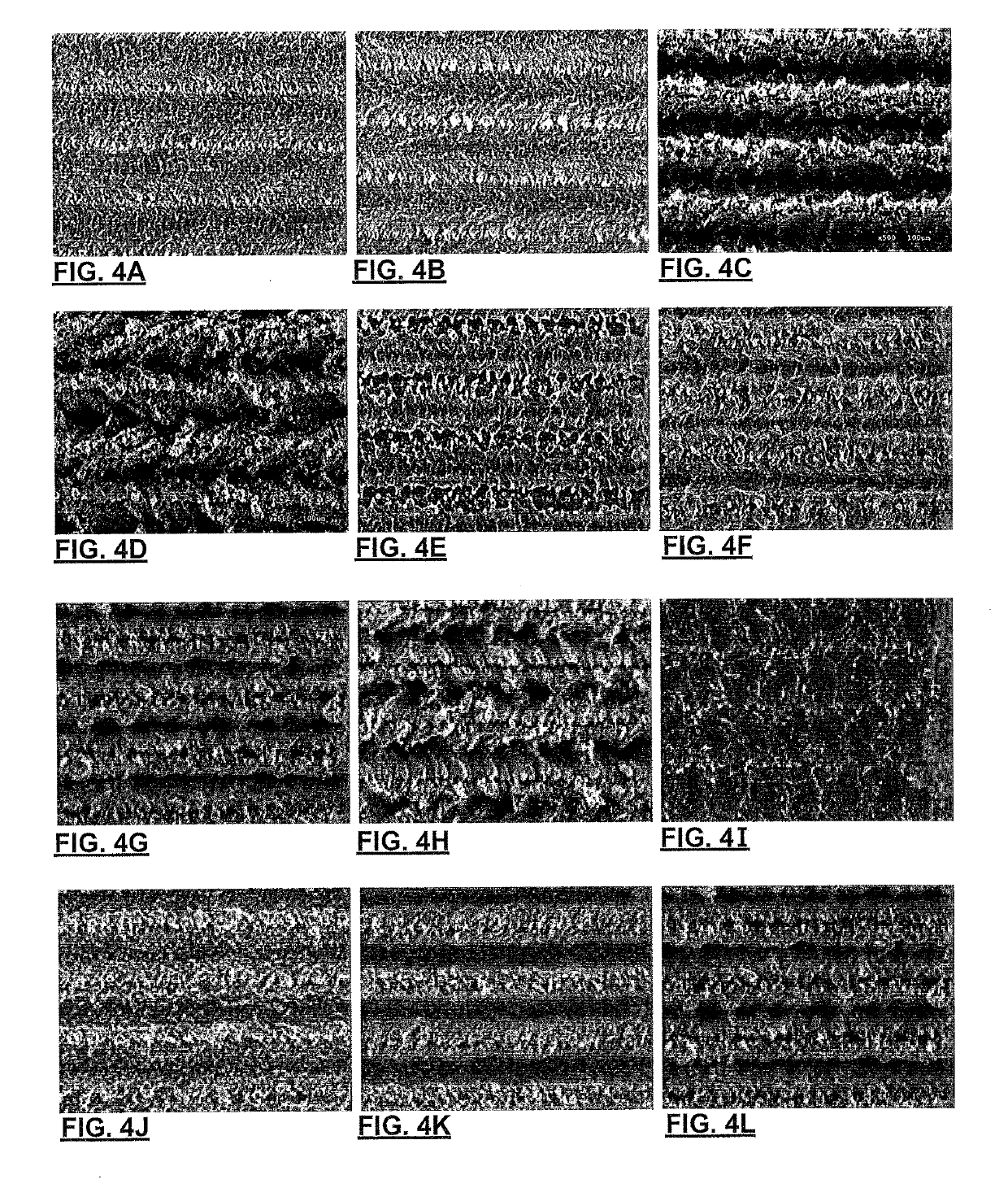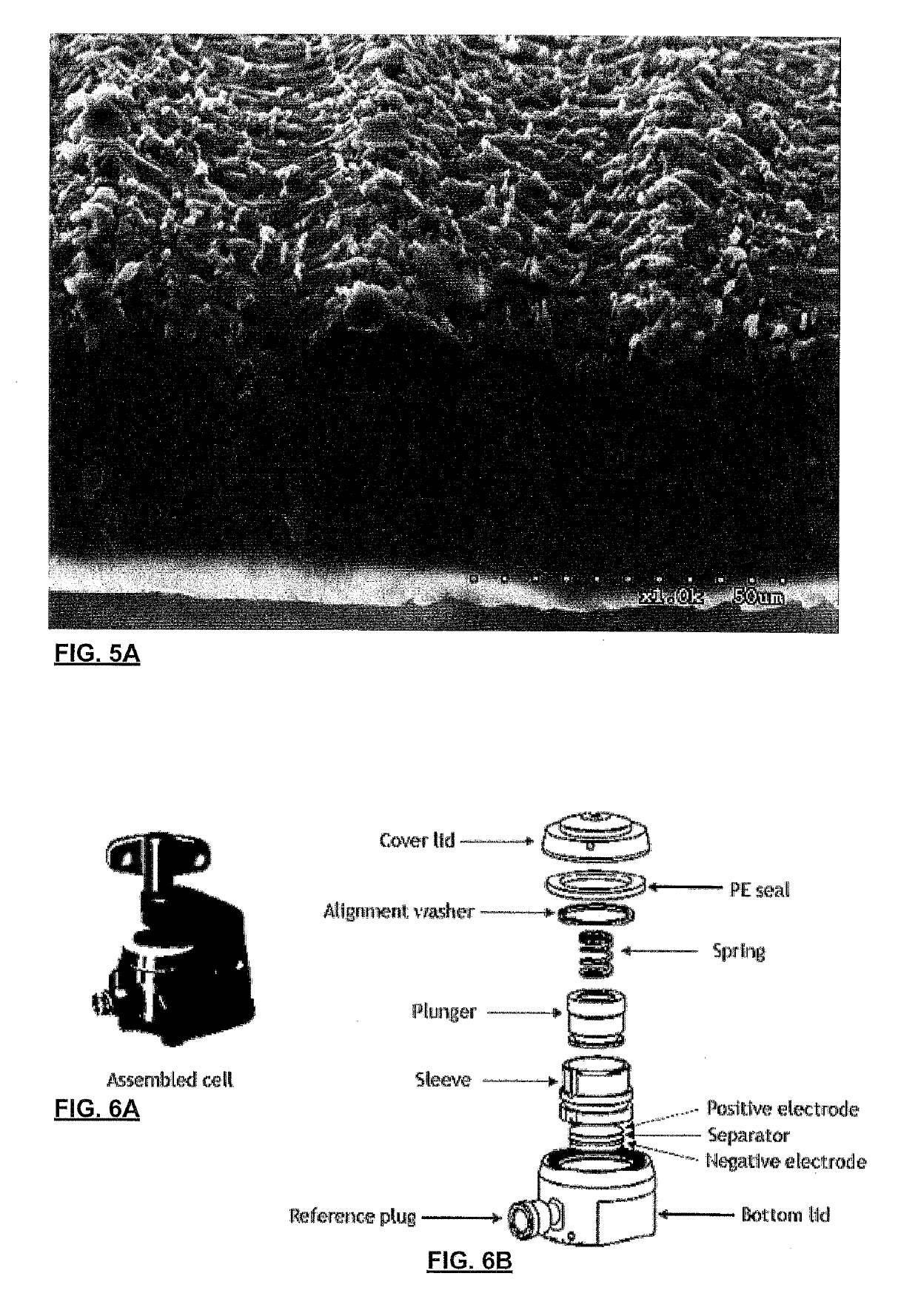Metallic surface with karstified relief, forming same, and high surface area metallic electrochemical interface
a technology of karstification and metallic surfaces, applied in the direction of metal-working apparatus, metallic material coating process, electrochemical process, etc., can solve the problems of increasing the durability of supercapacitors, reducing interfacial resistance, etc., and achieve the effect of efficient karstification
- Summary
- Abstract
- Description
- Claims
- Application Information
AI Technical Summary
Benefits of technology
Problems solved by technology
Method used
Image
Examples
example 1
Karstification with Solid State Q-Switched Laser
[0062]Applicant has demonstrated surface karstification by vacuum laser ablation of metallic foils. The experimental set-up for karstification included a high-vacuum stainless steel chamber with a glass cover to allow a laser beam to pass through it; a Spectra-Physics™ diode pumped solid state Q-switched laser (Model J40-BL6-106Q) operating at 1064 nm wavelength, with a power >5.0 W, energy per pulse >140 μJ, repetition rate of 1-150 kHz; an Aerotech™ X-Y-Z 3-axis motion stage to which the laser was mounted, conventional laser beam focusing optics (focusing the beam to 30 μm diameter), and sample foils (commercial grade 316 stainless steel (75 and 50 micron), aluminum foils 500, 50, 25 micron thick, and copper 25 and 50 microns) were chosen and mechanically mounted on a smooth ceramic support disc within the vacuum). The vacuum chamber was pumped down to very high vacuum level (5×10−7 Torr, although 0.5-1×10−5 Torr has been found to be...
example 2
Karstification with Excimer Laser
[0084]Applicant has also demonstrated surface karstification of metallic foils using vacuum laser ablation with an excimer laser operating using the experimental setup shown in FIG. 8. The excimer laser karstification system consisted of a KrF excimer laser (λ=248 nm, Lambda Physik, LPX-210i), beam steering and shaping optics, and a high-vacuum stainless steel chamber, equipped with a rotating plate for supporting the foils. The pulsed laser beam was focused onto the surface of an AISI 136L stainless steel, or aluminum, foil by means of a 100 cm focal length lens and three guiding mirrors. The laser beam was scanned over the radius of the rotating metallic foils using a preselected program and the plate was rotated at 35 rev / min. Scanning was performed using a programmable kinematic mount for the last mirror of the optical train. The laser beam spot size at the target surface was approximately 4 mm2. The on-target laser beam fluence was adjusted to a...
PUM
| Property | Measurement | Unit |
|---|---|---|
| roughness | aaaaa | aaaaa |
| thickness | aaaaa | aaaaa |
| thickness | aaaaa | aaaaa |
Abstract
Description
Claims
Application Information
 Login to View More
Login to View More - R&D
- Intellectual Property
- Life Sciences
- Materials
- Tech Scout
- Unparalleled Data Quality
- Higher Quality Content
- 60% Fewer Hallucinations
Browse by: Latest US Patents, China's latest patents, Technical Efficacy Thesaurus, Application Domain, Technology Topic, Popular Technical Reports.
© 2025 PatSnap. All rights reserved.Legal|Privacy policy|Modern Slavery Act Transparency Statement|Sitemap|About US| Contact US: help@patsnap.com



